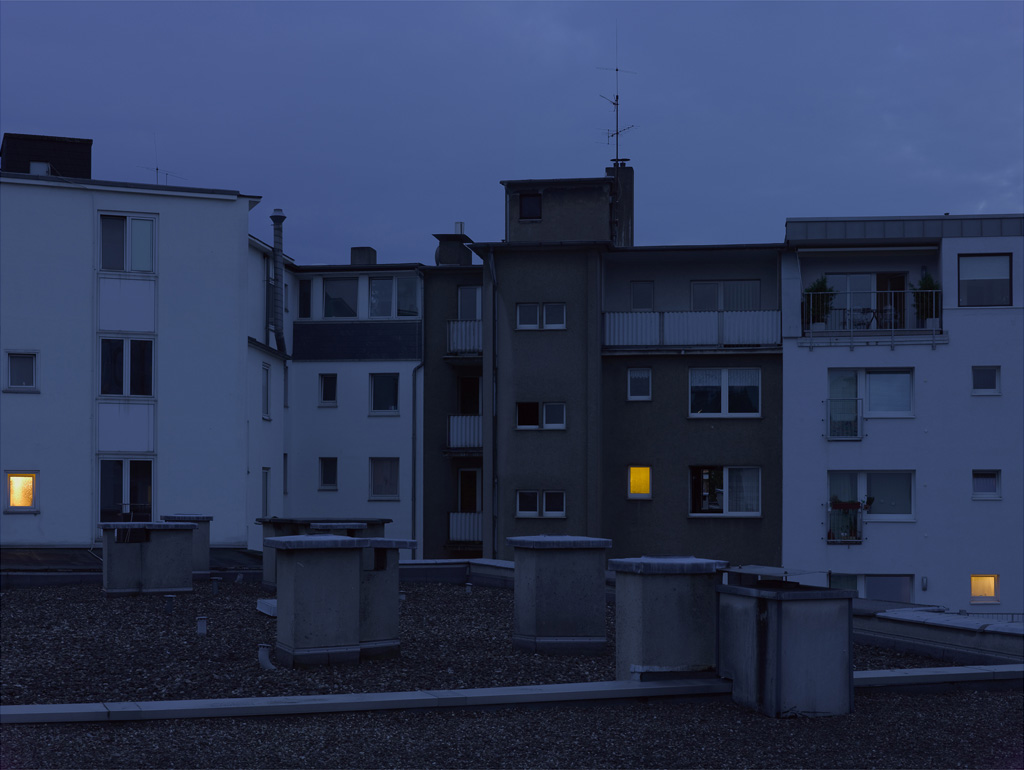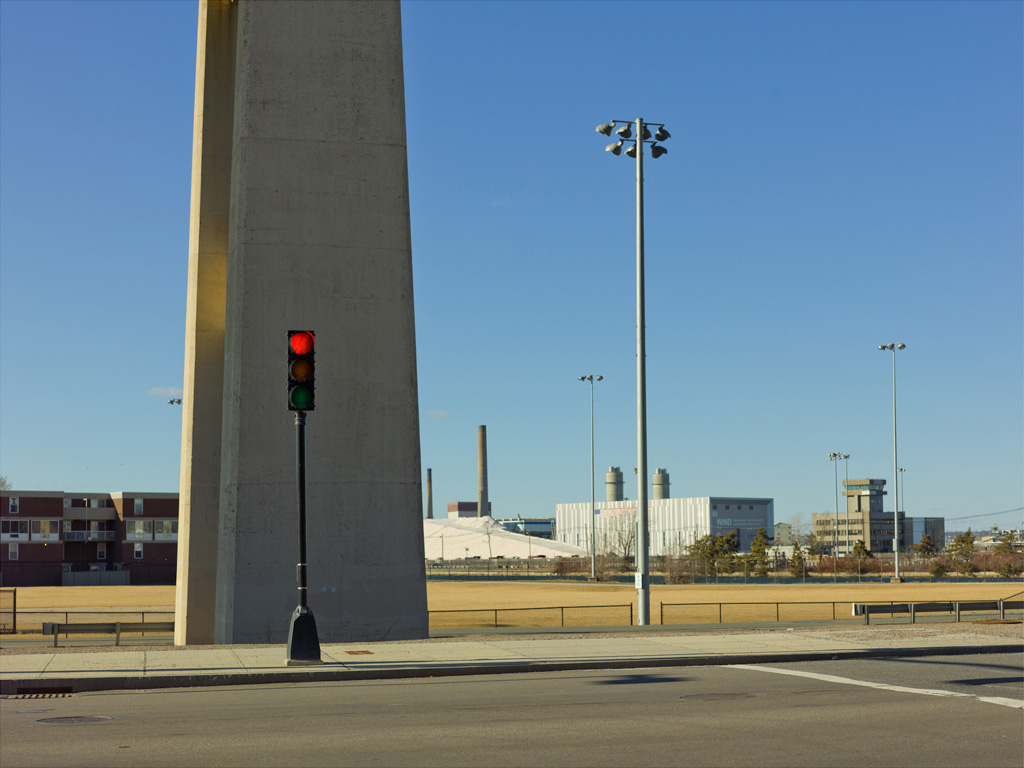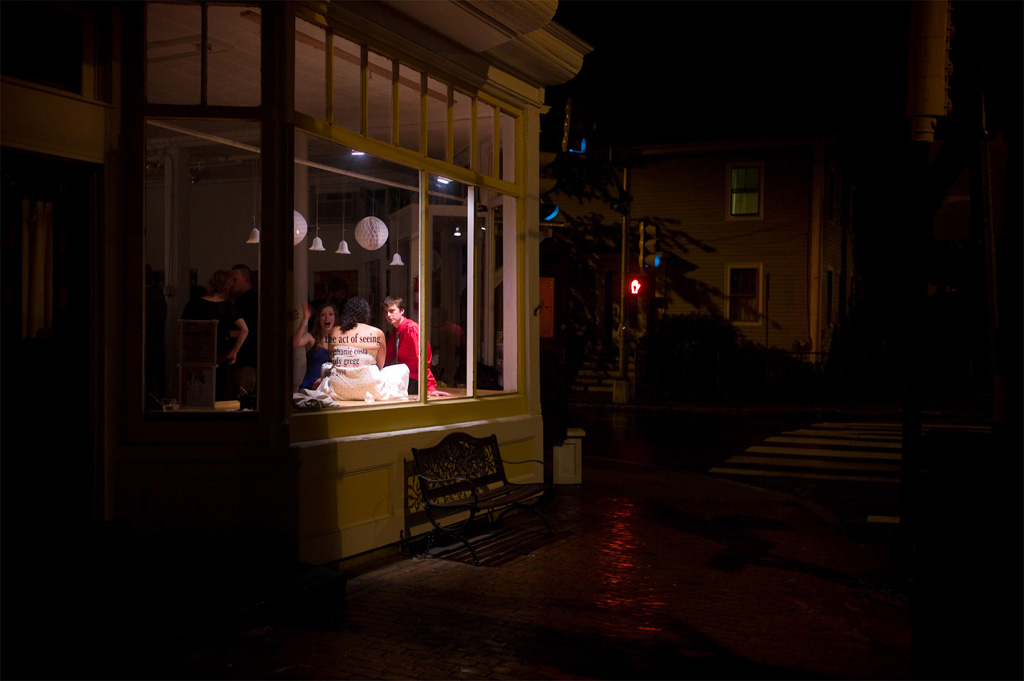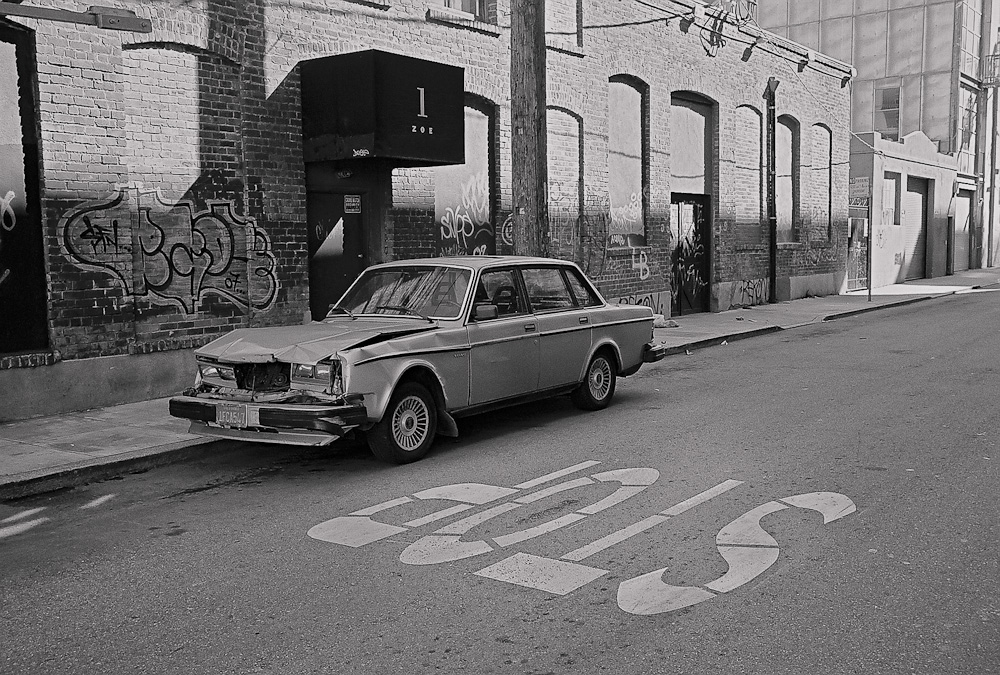One does not live in a void, so I too follow other photographers. Dirk Ahlgrim spiked my interest because he is able to render the mundane grand, like Gursky. Dirk even grew up in the same city. But there is more. He was kind enough to respond to a couple of questions over e-mail. This is the first of a series of interviews I am doing, to dig deeper and find out what is this thing called photographer.
Dirk on Gursky:
Andreas Gursky has been a great inspiration. We both grew up in the same city: Düsseldorf, Germany. In the beginning I liked his images of large crowds very much. The Stock Exchange series or Mayday. They are so intense. But over time I started to prefer his earlier work where he had less or no people in the images and where he captured a much calmer world. I like Rhein II very much. It shows the river in its most reduced form. I get inspired by Thomas Struth, Hiroshi Sugimoto, Stephen Shore, Candida Höfer, Elger Esser, Joel Sternfeld. Joel Sternfeld’s book American Prospects has been one of my favorites because he managed to do kind of documentary photography with an 8×10 camera.
On logistics:
I always carry a camera with me. I use a Leica M240 as my ‘go everywhere’ camera. I often use it to scout scenes that I may shoot with medium format later. Here is one example that I first shot with the Leica [photo] and then a week later again with my Leaf back [photo]. Sometimes I wander around with my medium format camera and tripod with no plan in mind. But most of the time I plan medium format shots ahead. I wait for the right light, weather, etc. It happens that I can’t get the same image again that I took with the Leica because things have changed. Then I have to adapt to that and accept the different outcome.
I photograph while I travel. For work and leisure I sometimes end up in interesting places. My partner and I like to discover new countries and we rarely go to the same place twice. My medium format system takes up some space, especially the tripod. Before every trip I debate with my partner if I should actually bring it along or not. She usually motivates me to do so. After the trip I am always glad that I listened to her and that I didn’t give in to my lazy side. To make travel easier I keep a second tripod in Germany.
Me: When do you know a shot is good?
Dirk: With film I had to wait until I had processed the film. The moment of seeing an image the first time was always super exciting. Inspecting a negative while it is drying had been my favorite part because at that point you see if all the thoughts you had put into the moment turned into a satisfying result. With digital it is a bit different because you can get the instant feedback. Nowadays I usually know that I got the shot when I press the shutter. With my Leica I feel the click and at the same time I can see what the person is doing. I don’t review the screen that often. Only from time to time to make sure I have the exposure right. With the Leica and my digital medium format camera I photograph 90% of the time in full manual mode.That ensures me that the settings are correct and that I have full control of the image. But when I shoot digital medium format photography I don’t always know that I got the photo. Sometimes I get back to my computer and look at the results and I notice that the focus was slightly off or that the shutter time was a bit too long to freeze a person. While I better understand the limits of the camera these days I am also trying to push the boundaries. But in some cases I end up not being able to get to a pleasing result within the usable settings of the camera. I find these moments super frustrating. But I am learning and I have to live with the limited settings of that camera. It forces me to find workarounds. Technology these days makes it all much easier for us photographers. A CMOS camera would solve that problem instantly by letting me use ISO 1000 and more. But part of photography for me is to overcome these challenges. My favorite moment is when everything worked out, when I have an image printed in large format, mounted on aluminum, and it looks the way I wanted it to look. That moment I have this great feeling of accomplishment and joy.
Dirk Ahlgrim is a design director at IDEO with a main focus on product portfolio development. The first laptop and the first computer mouse for Apple were developed by IDEO. The solutions have to be iconic, simple, superbly executed and have to be a tangible expression of the brand. This influences his photography as well. Dirk: I try to simplify my images, to only capture what is necessary to tell the story. Once I travelled for five weeks to Munich, Paris, Guangzhou, Shenyang, Shanghai, and Tokyo to interview people with diabetes in their homes. Visually and emotionally that was a very intense trip. I am surrounded by graphic designers, products designers, writers, storytellers and that has impact on my photographic work. I see their graphic art, listen to their stories, and study their presentations. I share my images with them and they like to provide feedback. My favorite moment is when someone says: “I have been to this place many times but I have never seen it like that”.
Me: What role does photography play in your life?
Dirk: I am constantly aware of photo opportunities around me. I observe the world and see how it would look in 2D. I have a very weak left eye and see most in 2D anyway. Nowadays I am having a better sense of people’s behaviors as well and can sometimes predict better what a person is going to do. That helps me to not just react to a scene but to prep for it before it actually happens.
In the past I photographed just because I liked the process. Now I focus more on creating a body of work. Three years ago I moved into an artist building in Boston and I am better involved in the art activities round me. Once a year I open up my studio and show my work. I started printing and exhibiting photos and I am submitting work to curated shows around Boston. In the past I photographed things randomly. The images were interesting but not connected. Now I focus more on themes. One of my favorite themes right now is my Corner Views series. It is a very simple approach inspired by Hiroshi Sugimoto. Instead of finding new vantage points for each architecture that I photograph, I instead apply the same corner view and composition to every photo. That forces the viewer to focus on a few details only. Surprisingly many buildings can be recognized by just looking at a corner. This approach creates a beautiful consistency across all images while being unique in the details. I even used a knife to cut diagonal lines into the fresnel lens of my medium format camera to better compose the shots.
Check out Dirk Ahlgrims photostream on flickr. Below are some of the photographs I really like that we talked about:

Dirk: I took this one in Cologne. One day we were sitting outside and I noticed the colors. So I set up the camera the next day to capture this photo. There is only a short period of time when it is not too dark and not to bright. But you can’t control which windows will be lit or if any will be lit at all. There is a bit of luck involved.

Dirk: I like this portrait of Tobin bridge a lot. Very simplified, just showing a detail. It is not a photo that would get many ‘favorites’ on Flickr but I can get very excited about scenes like that. I find it beautiful with its light and composition. Minutes after I took that photo a police car stopped and an officer questioned me. He asked why I took a photo of that bridge. ‘There is nothing beautiful there’ he said. I told him that I find it beautiful.

Me: Makes me think of Gregory Crewdson.
Dirk: I like the lighting and the mood of Crewdsons photographs. He seems to put a lot of effort into planning and execution. I have deep respect for that. I took this photo with my Leica when I walked by a gallery in Cambridge that had an opening. So far I have not really done any planned people photography, like Crewdson does. It would be interesting to try this one day.

Dirk: This image is an older shot that I took in San Francisco in 2007. It has a really subtle humor to it without exploiting anybody. It shows a unique combination of elements. I don’t like walking around and taking photos randomly of people on the street. There has to be some uniqueness to the story that the photo is about to tell. Finding these moments is a quest for me.
Thank you so much Dirk Ahlgrim for sharing. Keep photographing!